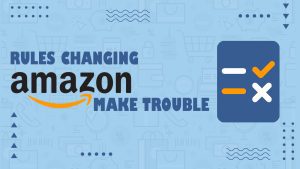Introduction
Marketing and sales are two of the most important functions in any business. They are responsible for attracting, engaging, and converting customers, as well as generating revenue and growth. However, the marketing and sales landscape is constantly changing and evolving, with new technologies, trends, and challenges emerging every day. To stay ahead of the competition and meet the expectations of the modern buyer, marketing and sales teams need to continuously learn and improve their skills and competencies.
Upskilling is the process of acquiring new or improved skills and knowledge that are relevant to one’s current or future role. Upskilling can help marketing and sales teams to enhance their performance, productivity, creativity, and innovation, as well as to adapt to changing customer needs and market conditions. Upskilling can also boost employee engagement, retention, and satisfaction, as well as create a culture of learning and development within the organization.
But how can you effectively upskill your marketing and sales teams? Here are 10 ways that you can implement in your business
1. Assess the current skills and gaps of your teams
The first step to upskilling your marketing and sales teams is to identify their current skills and competencies, as well as the areas where they need improvement or development. You can use various tools and methods to assess the skills and gaps of your teams, such as:
- Self-assessments: You can ask your team members to rate their own skills and knowledge on a scale or using a checklist. This can help them to reflect on their strengths and weaknesses, as well as their learning goals and preferences.
- Feedback: You can collect feedback from various sources, such as customers, managers, peers, or external partners, to evaluate the performance and effectiveness of your team members. You can use surveys, interviews, reviews, or ratings to gather feedback.
- Tests: You can use online or offline tests or quizzes to measure the level of skills and knowledge of your team members on specific topics or domains. You can use multiple-choice questions, case studies, simulations, or scenarios to test their abilities.
- Analytics: You can use data and metrics to track and analyse the results and outcomes of your team members’ activities and campaigns. You can use key performance indicators (KPIs), such as leads generated, conversions, revenue, customer satisfaction, retention, or loyalty, to measure their impact.
Based on the results of the assessment, you can identify the skill gaps that need to be addressed, as well as the skill levels that need to be maintained or enhanced.
2. Define the learning objectives and outcomes for your teams
The next step is to define the learning objectives and outcomes for your marketing and sales teams. These are the specific skills and knowledge that you want your team members to acquire or improve through upskilling. The learning objectives and outcomes should be aligned with your business goals and strategies, as well as the needs and expectations of your customers.
To define the learning objectives and outcomes for your teams, you can use the SMART framework:
- Specific: The learning objectives and outcomes should be clear, concise, and concrete. They should state what exactly you want your team members to learn or achieve.
- Measurable: The learning objectives and outcomes should be quantifiable or observable. They should state how you will measure or evaluate the progress or success of your team members.
- Achievable: The learning objectives and outcomes should be realistic and attainable. They should state what resources or support you will provide or require for your team members.
- Relevant: The learning objectives and outcomes should be meaningful and valuable. They should state why you want your team members to learn or achieve them.
- Time-bound: The learning objectives and outcomes should have a deadline or timeframe. They should state when you want your team members to complete or accomplish them.
For example, a learning objective for a marketing team member could be: “By the end of this quarter, I will learn how to use Google Analytics to track and optimize the performance of our website.”
3. Choose the best learning methods and formats for your teams
The third step is to choose the best learning methods and formats for your marketing and sales teams. These are the ways that you will deliver or facilitate the learning content and experiences for your team members. The learning methods and formats should be suitable for the learning objectives and outcomes that you have defined, as well as the preferences and styles of your team members.
There are various learning methods and formats that you can choose from, such as:
- Online courses: You can enroll your team members in online courses that offer structured curriculum and instruction on various topics or skills. You can use platforms like Coursera, Udemy, LinkedIn Learning, or Skill share to access online courses from experts and instructors.
- Webinars: You can invite your team members to attend live or recorded webinars that offer interactive and engaging presentations and discussions on various topics or skills. You can use tools like Zoom, Webex, or GoToWebinar to host or join webinars from speakers and experts.
- Podcasts: You can recommend your team members to listen to podcasts that offer informative and entertaining conversations and interviews on various topics or skills. You can use apps like Spotify, Apple Podcasts, or Google Podcasts to access podcasts from hosts and guests.
- Books: You can suggest your team members to read books that offer comprehensive and in-depth knowledge and insights on various topics or skills. You can use platforms like Amazon, Audible, or Goodreads to find and access books from authors and experts.
- Blogs: You can share with your team members blogs that offer relevant and timely information and tips on various topics or skills. You can use platforms like Medium, WordPress, or Blogger to find and access blogs from writers and influencers.
- Videos: You can show your team members videos that offer visual and auditory explanations and demonstrations on various topics or skills. You can use platforms like YouTube, Vimeo, or TED to find and access videos from creators and speakers.
- Games: You can challenge your team members to play games that offer fun and interactive learning experiences on various topics or skills. You can use platforms like Kahoot, Quizizz, or Quizlet to create and access games from educators and learners.
- Mentoring: You can pair your team members with mentors who offer personalized guidance and feedback on various topics or skills. You can use platforms like MentorCruise, MentorCloud, or Mentorship to find and connect with mentors from professionals and experts.
- Coaching: You can hire coaches who offer customized support and advice on various topics or skills. You can use platforms like CoachHub, BetterUp, or me to find and hire coaches from certified and experienced coaches.
- Peer learning: You can encourage your team members to learn from each other by sharing their knowledge and experiences on various topics or skills. You can use tools like Slack, Microsoft Teams, or Google Workspace to create and join peer learning groups or communities.
You can also combine different learning methods and formats to create a blended learning approach that offers a variety of learning opportunities for your team members.
4. Provide the necessary resources and tools for your teams
The fourth step is to provide the necessary resources and tools for your marketing and sales teams. These are the materials and equipment that you will need or use to support the learning process of your team members. The resources and tools should be accessible, reliable, and user-friendly for your team members.
Some of the resources and tools that you can provide for your teams are:
- Content: You can provide your team members with content that covers the learning objectives and outcomes that you have defined. The content should be relevant, accurate, and up-to-date for your team members. The content could be in the form of text, images, audio, video, or interactive elements.
- Devices: You can provide your team members with devices that enable them to access the learning content and methods that you have chosen. The devices could be laptops, tablets, smartphones, headphones, speakers, or cameras.
- Software: You can provide your team members with software that facilitates the learning content and methods that you have chosen. The software could be applications, programs, platforms, tools, or plugins.
- Internet: You can provide your team members with internet that allows them to connect to the learning content and methods that you have chosen. The internet should be fast, stable, and secure for your team members.
- Space: You can provide your team members with space that accommodates the learning content and methods that you have chosen. The space could be physical or virtual, and should be comfortable, quiet, and distraction-free for your team members.
You should also ensure that your team members have the necessary permissions, licenses, subscriptions, or accounts to access the resources and tools that you have provided.
5.Create a learning plan and schedule for your teams
The fifth step is to create a learning plan and schedule for your marketing and sales teams. These are the steps and timelines that you will follow or assign to implement the upskilling process for your team members. The learning plan and schedule should be clear, realistic, and flexible for your team members.
To create a learning plan and schedule for your teams, you can use the following steps:
- Prioritize: You can prioritize the learning objectives and outcomes that you have defined based on their importance, urgency, difficulty, or duration.
- Assign: You can assign the learning objectives and outcomes that you have prioritized to your team members based on their roles, responsibilities, interests, or skills. You can use a spreadsheet, a dashboard, or a project management tool to assign and track the learning tasks and progress of your team members.
- Schedule: You can schedule the learning objectives and outcomes that you have assigned to your team members based on their availability, workload, or deadlines. You can use a calendar, a planner, or a scheduling tool to create and share the learning timetable and reminders for your team members.
- Review: You can review the learning plan and schedule that you have created with your team members to ensure that they are clear, realistic, and flexible. You can use a meeting, a chat, or a feedback tool to communicate and collaborate with your team members on the learning plan and schedule.
6.Monitor and support the learning process of your teams
The sixth step is to monitor and support the learning process of your marketing and sales teams. These are the actions and interventions that you will take or offer to facilitate the learning experience and outcome of your team members. The monitoring and support should be consistent, timely, and constructive for your team members.
Some of the ways that you can monitor and support the learning process of your teams are:
- Track: You can track the learning progress and performance of your team members using the data and metrics that you have defined in the learning objectives and outcomes. You can use reports, dashboards, or analytics tools to collect and visualize the learning data and metrics for your team members.
- Feedback: You can provide feedback to your team members on their learning progress and performance using the criteria and standards that you have defined in the learning objectives and outcomes. You can use surveys, ratings, reviews, or comments to give feedback to your team members.
- Recognize: You can recognize the achievements and improvements of your team members on their learning progress and performance using the rewards and incentives that you have defined in the learning objectives and outcomes. You can use badges, certificates, points, or prizes to reward your team members.
- Guide: You can guide your team members on their learning challenges and difficulties using the resources and tools that you have provided in the learning plan and schedule. You can use tips, hints, examples, or demonstrations to help your team members.
- Motivate: You can motivate your team members on their learning goals and aspirations using the benefits and values that you have defined in the learning objectives and outcomes. You can use stories, testimonials, or case studies to inspire your team members.
7. Evaluate and measure the learning outcome of your teams
The seventh step is to evaluate and measure the learning outcome of your marketing and sales teams. These are the methods and indicators that you will use or apply to assess the learning impact and effectiveness of your team members. The evaluation and measurement should be objective, valid, and reliable for your team members.
Some of the ways that you can evaluate and measure the learning outcome of your teams are:
- Tests: You can use online or offline tests or quizzes to measure the level of skills and knowledge that your team members have acquired or improved through upskilling. You can use multiple-choice questions, case studies, simulations, or scenarios to test their abilities.
- Projects: You can use online or offline projects or assignments to measure the level of skills and knowledge that your team members have applied or transferred through upskilling. You can use tasks, challenges, problems, or solutions to test their abilities.
- Portfolios: You can use online or offline portfolios or collections to measure the level of skills and knowledge that your team members have demonstrated or showcased through upskilling. You can use samples, works, products, or services to test their abilities.
- Reviews: You can use online or offline reviews or appraisals to measure the level of skills and knowledge that your team members have contributed or delivered through upskilling. You can use ratings, scores, feedbacks, or comments to test their abilities.
8. Analyse and report the learning results of your teams
The eighth step is to analyse and report the learning results of your marketing and sales teams. These are the insights and outcomes that you will derive or communicate from the evaluation and measurement of your team members. The analysis and reporting should be clear, comprehensive, and actionable for your team members.
Some of the ways that you can analyse and report the learning results of your teams are:
- Insights: You can derive insights from the evaluation and measurement of your team members using data analysis techniques and tools. You can use statistics, graphs, charts, or tables to summarize and interpret the learning data for your team members.
- Outcomes: You can communicate outcomes from the evaluation and measurement of your team members using data visualization techniques and tools. You can use reports, presentations, dashboards, or infographics to display and share the learning data for your team members.
9. Celebrate and share the learning success of your teams
The ninth step is to celebrate and share the learning success of your marketing and sales teams. These are the actions and events that you will take or organize to acknowledge and appreciate the learning achievements and improvements of your team members. The celebration and sharing should be fun, meaningful, and inclusive for your team members.
Some of the ways that you can celebrate and share the learning success of your teams are:
- Party: You can organize a party or a social event to celebrate and share the learning success of your team members. You can use food, drinks, music, or games to create a festive and enjoyable atmosphere for your team members.
- Awards: You can organize an awards ceremony or a recognition event to celebrate and share the learning success of your team members. You can use trophies, medals, certificates, or plaques to honour and commend the outstanding and exemplary achievements and improvements of your team members.
- Stories: You can organize a storytelling session or a sharing event to celebrate and share the learning success of your team members. You can use stories, testimonials, or case studies to highlight and showcase the remarkable and inspiring achievements and improvements of your team members.
10. Review and improve the upskilling process for your teams
The tenth and final step is to review and improve the upskilling process for your marketing and sales teams. These are the actions and interventions that you will take or offer to enhance and optimize the upskilling experience and outcome for your team members. The review and improvement should be continuous, iterative, and collaborative for your team members.
Some of the ways that you can review and improve the upskilling process for your teams are:
- Feedback: You can collect feedback from your team members on their upskilling experience and outcome using surveys, interviews, reviews, or ratings. You can use open-ended or closed-ended questions to gather feedback from your team members.
- Analysis: You can analyse feedback from your team members on their upskilling experience and outcome using data analysis techniques and tools. You can use statistics, graphs, charts, or tables to summarize and interpret the feedback data from your team members.
- Action: You can act based on the feedback and analysis from your team members on their upskilling experience and outcome using data-driven techniques and tools. You can use reports, presentations, dashboards, or infographics to communicate and implement the action plans for your team members.
Conclusion
We hope this blog post has helped you to understand how to upskill your marketing and sales teams effectively. Upskilling is not only beneficial for your business, but also for your employees. By upskilling your marketing and sales teams, you can:
- Increase their performance, productivity, creativity, and innovation.
- Adapt to changing customer needs and market conditions.
- Boost their engagement, retention, and satisfaction.
- Create a culture of learning and development.
If you need more help or guidance on upskilling your marketing and sales teams, you can contact us at eStores Expert. We have a team of professional e-commerce experts who can consultant and can help you with various aspects of online selling, such as:
- Setting up and managing your online store.
- Creating and executing effective marketing campaigns.
- Optimizing your sales funnel and conversion rate.
- Providing excellent customer service and support.
You can visit our website at eStores Expert to learn more about my services and portfolio. You can also follow us on Facebook, Twitter, or LinkedIn to get more tips and updates on e-commerce trends and best practices.
Thank you for reading this blog post. Feel free to leave a comment below or share this post with your friends and colleagues who might be interested in upskilling their marketing and sales teams.





